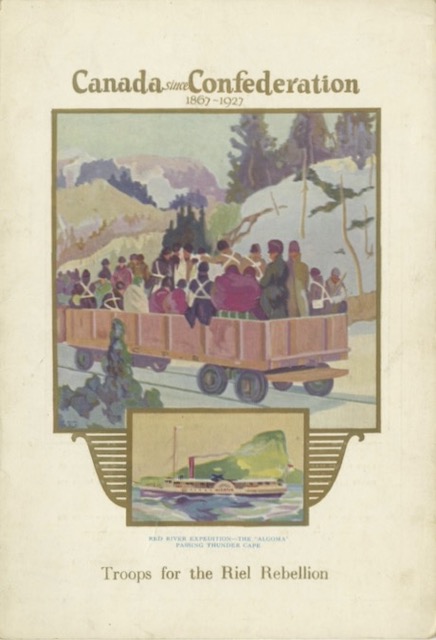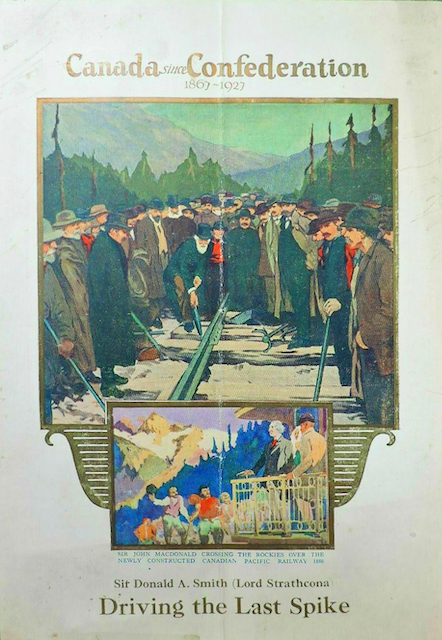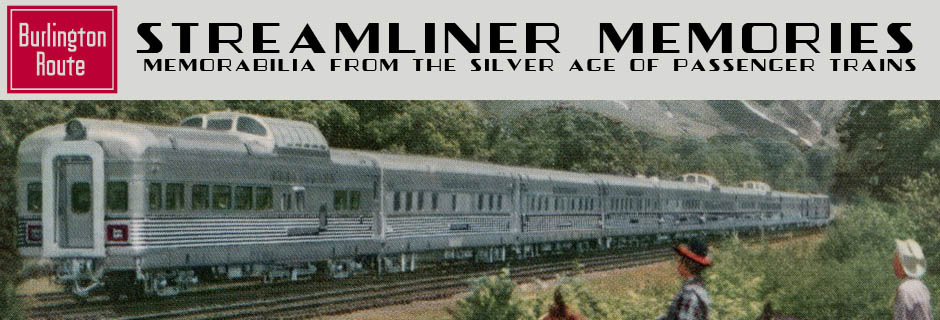We’ve seen this menu before from the Chung collection. That one was a “mid-day” menu for the Imperial, Canadian Pacific’s premiere year-round train. This one has the same ambiguously labeled Trans-Canada Limited menu as yesterday’s Snow Plow menu.
 Click image to download a 1.3-MB PDF of this menu.
Click image to download a 1.3-MB PDF of this menu.
Louis Riel was a metis — half Indian, half white — upset with poor treatment by the Canadian government. He first led a rebellion in 1869 and it took 95 days for troops from Toronto to reach Fort Garry (Winnipeg). The troops were victorious but Riel, having fled to the United States, lived to start another rebellion in 1885. Although the Canadian Pacific was not yet complete, the railroad was able to deliver troops to Manitoba in just ten days, partly over rails and partly marching on rail right-of-way. In 1927, the railroad was proud of its role in suppressing the revolt but today might not be so proud of supporting policies that violated treaties and discriminated against people because of their heritage.

Although we’ve seen the Riel Rebellion menu before, I’ve found (but did not acquire) one more menu in the Confederation series that isn’t in the Chung collection. The cover shows Sir Donald Smith, one of Canadian Pacific’s main financiers, pounding the last spike in British Columbia. The inset picture shows John Macdonald, Canada’s first premier and the first to take a rail trip across the country.
During that trip, Macdonald’s wife, Agnes, decided the view from the car windows wasn’t good enough, so she insisted on riding through the mountains seated on the cowcatcher of the locomotive. She told her story of that trip in an 1887 article in Murray’s Magazine. Her ride is also memorialized in a song by Canadian folk band Tanglefoot.
